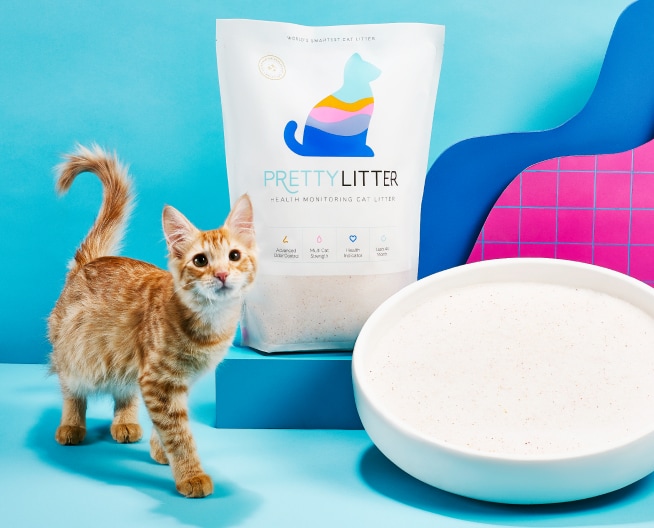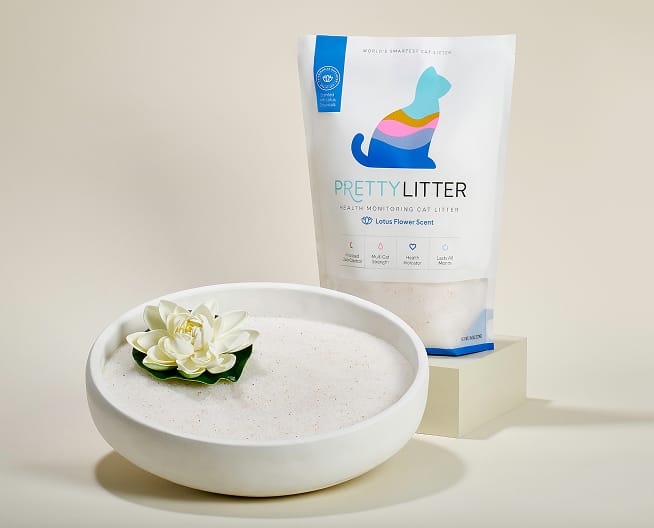December 22, 2020 |8 min read |Veterinarian Reviewed
Cat Urinary Tract Infection Recovery

Written by

A cat urinary tract infection, or UTI, is caused by bacteria entering the cat’s urethra, which then causes a bacterial infection. It is more common in female cats, but male cats can still experience this urinary issue.
UTIs in cats are relatively rare, but urinary problems in cats are not. In fact, a urinary tract issue is one of the most common conditions to plague male cats, especially. Because in addition to cat UTIs, there are also two important conditions to be aware of: feline idiopathic cystitis (FIC) and urinary crystals.
Urinary crystals occur when tiny, microscopic crystals irritate a cat’s bladder, making it painful to urinate. There are two main types of crystals that are seen in cats, struvite, and oxalate. Both of these crystals are caused when there is an imbalance in a cat’s urinary pH.
FIC presents itself in a similar way as crystals or a UTI, but there is no root cause of the problem, unlike both of the other conditions. Many vets think that stress plays a role, as does dehydration, inflammation in the bladder, or physical situations such as a small urethra.
Both of these urinary issues can lead to serious medical conditions such as bladder stones in cats or kidney stones or a urinary blockage, which can be fatal. The most common signs or a cat experiencing a urinary tract problem include:
- Going in and out of the litter box frequently
- Only urinating a small amount
- Howling or crying while urinating
- Excessively licking their genitals
- Blood in the urine
- Straining to urinate
- Urinating outside of the litter box
- Frequent or prolonged attempts to urinate
Urinary Tract Infection Treatment Options
The type of treatment your cat receives for their urinary issue will depend on what the diagnosis is. The treatment plan will also determine the cat urinary tract infection recovery period.
For a cat facing a UTI, the most common treatment plan is a course of antibiotics. Luckily, these antibiotics usually work quickly and you can see results in as little as five days if there are no other complications.
For cats struggling with urinary crystals or FIC, the treatment plans might be a little different. If your cat is facing a urinary blockage when you take them to the vet, doctors will treat this as an emergency situation because of its life-threatening nature. They will determine if, in fact, your cat is blocked and if so, perform surgery to remove the blockage. This treatment will likely include an IV and a catheter, as well.
After surgery, or for other cases that don’t require surgery, your vet may prescribe a few medications that can help your kitty go to the bathroom and help improve their urinary health. The first is a pain medication, including sedatives, antiepileptics, or opioid antagonists. Some of the most common are gabapentin (a mild pain med/relaxant), buprenorphine (an opioid antagonist), or alprazolam.
In addition, they may prescribe an antispasmodic, which helps relax the bladder and make it easier to urinate. This is especially helpful for kitties struggling with bladder inflammation as it helps relieve the muscles in the bladder.
Lastly, they may give your kitty subcutaneous or IV fluids to help flush everything out and will likely do a urinalysis and possibly blood work to check the pH of the cat’s urine, look for blood, and check for crystals and any elevated issues, such as a high white blood cell count.
Is your kitty experiencing other health-related issues such as roundworms? Read on to learn about the difference between roundworms vs tapeworms in cats to make sure you are up to speed on how to help your sick feline friend recover quickly.
Urinary Tract Infection Recovery
Although dealing with urinary issues or a bacterial infection in kitties can be really scary, the good news is that when treated early and with a proper treatment and recovery plan, the prognosis is good and most cats make a full recovery within a few weeks. Let’s look at what to expect after your kitty goes through a UTI, urinary crystals, or FIC.
If your vet prescribed a course of antibiotics to treat a urinary tract disease or other infection, you should expect to see your kitty returning to normal in about 2 days and a full recovery should take 5-7 days, depending on the diagnosis. It’s very important to give your cat the full course of antibiotics, even if they start feeling better.

If your cat had to have a more complicated treatment plan, there are a few things to expect. If he had to have a urinary catheter, you will likely see some redness and swelling around the area. Monitor this area to make sure no infections occur. You may also notice that your cat is licking the area as it heals. Also, after a catheter is removed, some cats may “dribble” urine. This is different than actually urinating, so don’t worry! This is normal after a catheter.
You may also notice that your kitty is nervous to use the litter box. This is because they have associated it with the pain and stress they felt when they were facing their earlier condition. Encourage your kitty to use the litter box by keeping it extra clean at all times and removing any distractions (other animals, loud noises, etc.).
After your kitty returns home, you should closely monitor their litter box usage to make sure they are able to go on their own. It may take a few hours after you get them home because of the stress, but if you don’t see your kitty pee on their own within 24 hours of coming home, call your vet. If you have other cats in the house, you may want to consider locking the kitty with the urinary tract issue in a room by themselves so you can be sure they are going.
Your vet will likely recommend a re-check in about a week or two after treatment to make sure there are no other symptoms that have surfaced. They may recommend doing another urinalysis to compare progress.
Tips for a Successful Recovery
Here are a few things you can do to aid in your cat urinary tract infection recovery and help them feel better fast:
- Make sure you keep the litter box extra clean. You want to make it as inviting as possible to make it easier for your kitty to go
- Monitor for any changes in symptoms and isolate the kitty if needed to make sure you know when they go
- Use a health-tracking litter to see any changes in pH
- Switch them to a prescription food focused on urinary health (based on your vet’s recommendation)
- Make sure they are getting enough water and supplement water intake with wet food
- Reduce stress if possible

Conclusion
Urinary issues can be scary to deal with, but with a proper diagnosis and knowing what to expect during urinary tract infection recovery, you can give your kitty everything they need to bounce right back to their normal, healthy cat self again. Depending on the condition, including UTIs, FIC, or urinary crystals, your vet will have a different treatment plan and therefore different recovery. You should start seeing improvements in a few weeks but check with your vet if things change.










